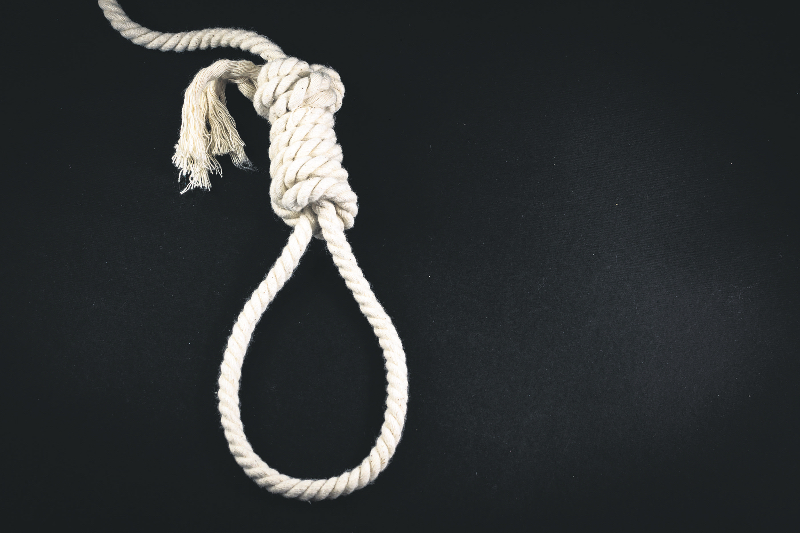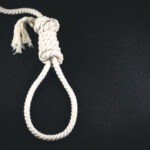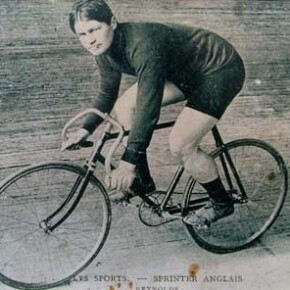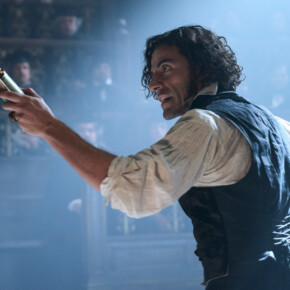Dubliners and the death penalty
Dublin People 26 Nov 2016
IRELAND had a bitter history of capital punishment over the centuries under British rule. Many of our most famous patriots, from Pádraig Pearse to Robert Emmet, had met their end as a result of a death penalty.
It’s easy to see why the provisional Irish Government in 1922 seriously considered banning the practice of putting criminals to death, even at a time when the punishment was used in almost every corner of the earth. The impending Civil War soon changed minds, however, and the ultimate deterrent was kept just in case.
That conflict saw the execution of 81 rebels. The first were four young Dublin men executed in Kilmainham Gaol in November 1922 after being found in possession of revolvers without proper authority.
Dozens of other suspected republicans from the capital would be shot dead by firing squad during the conflict.
The ultimate deterrent was also kept on the statute books for ordinary murder, although this would be carried out by a hangman rather than a firing squad.
The first execution was that of Dubliner William Downes, on 29 November, 1923. The death penalty had been retained to protect against republican violence, but ironically Downes was pro-Treaty and was employed as a dispatch rider in the National Army. He shot and killed policeman Thomas Fitzgerald, who was attempting to arrest him, after Downes committed an armed robbery at a candle factory in Castleknock.
Justice was mercilessly swift, with Downes’ execution occurring just over a month after the murder. Thomas Pierrepoint, the English executioner, was contacted and offered £15 as his fee, travelling over to Mountjoy where he officiated at the hanging.
The next Dubliner to meet his end in Mountjoy’s Hanghouse was Henry McCabe who was found guilty of one of the most notorious mass murders in Irish history. McCabe was a gardener in a large house called La Mancha, just outside Malahide.
The owners of the property, and McCabe’s employers, were the wealthy McDonnell family. In March 1926, he murdered four members of the family, as well as two co-workers, by bludgeoning them to death. He then stole valuables and set the house on fire in an attempt to cover his tracks. He was immediately the prime suspect due to his suspicious behaviour and despite protesting his innocence was found guilty and hanged in December of the same year.
Some Dubliners who saw the judge place the black cap on his head would be more fortunate, including three young men who murdered their partners.
Patrick Boylan was reprieved just hours before he was due to mount the scaffold in 1936 after slitting his girlfriend’s throat following a drunken row at a party in Coburg Place. He would serve 11 years in jail instead.
John Fanning also killed his girlfriend, strangling her to death on Howth Head in 1948. She had threatened to break up with him. Fanning, too, would come within days of the noose before the Government chose to exercise leniency.
Finally, in 1952, Rathfarnham man William Hopkins was found guilty of stabbing to death Theola Curran, his fiancée, from Kimmage, after she told him their relationship was over. Showing incredible generosity, Ms Curran’s family appealed for mercy on the prisoner’s behalf. Mercy was indeed shown and Hopkins’ death sentence was commuted to penal servitude for life.
Some of the most controversial executions in the history of the State occurred in Dublin during the Emergency, or World War II.
Patrick McGrath, a native of Aungier Street in the city, had survived being shot by the British in the Easter Rising. He sided with the anti-Treaty faction of the IRA after independence, however, continuing to serve in the organisation.
In 1940, officers of the Special Branch raided a house on Rathgar Road where members of the IRA had based themselves. McGrath and his colleagues chose to shoot their way out rather than surrender, killing two detectives on their way. They were quickly apprehended and sentenced to death by a military tribunal.
Appeals for clemency were made to Taoiseach Éamon de Valera, himself a former anti-Treaty soldier. The appeals were refused and McGrath and a fellow volunteer named Thomas Harte were put to death by firing squad just weeks after the crime.
Several women from Dublin would also get the dreaded death penalty. Mary Agnes Daly (27) saw 83-year-old Mary Gibbons kneeling in prayer in a church in Glasnevin in 1948. Daly, who was in arrears with her rent money, beat the elderly woman over the head with a hammer in an attempt to steal her bag. Gibbons died some days later.
Daly, despite being caught red-handed, denied the crime but was sentenced to death nonetheless. After a reprieve she would spend six years in jail instead.
The ultimate deterrent was finally abolished from the constitution in 1990. During the lifetime of the State, five men had received the punishment in Dublin and 28 men and one woman nationally.
Colm Wallace is the author of ‘Sentenced to Death: Saved from the Gallows’. It’s available from Eason, Dubray’s, O’Mahony’s and all good bookshops. It can also be ordered from Amazon.com
- Dubliners and the death penalty
- Dubliners and the death penalty












